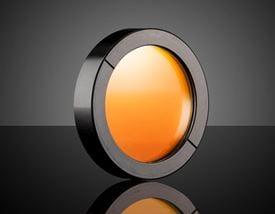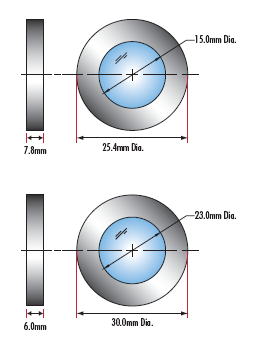お客様のプライバシーは当社にとって重要です
エドモンド・オプティクスでは、ウェブサイトの機能及びコンテンツを最適化し、強化するためにCookieを使用しています。「詳細を見る」ボタンをクリックすると、私たちが使用するCookieの詳細を表示することができます。弊社はマーケティングCookiesから得たお客様の情報を販売することはありません。
- 必須Cookieは、ページナビゲーションやウェブサイトの安全なエリアへのアクセスのような基本的な機能を有効し、ウェブサイトを利用しやすくするものです。ウェブサイトはこうしたCookieがないと適切に動作しません。
- Cloudflare1このプロバイダーについてさらに知る__cf_bmThis cookie is used to distinguish between humans and bots. This is beneficial for the website, in order to make valid reports on the use of their website.
- edmundoptics.jp1QuoteID保留中
- www.edmundoptics.jp1CookieConsentStores the user's cookie consent state for the current domain
- Cloudflare
- 統計Cookieは、ウェブサイトとサイト訪問者のやり取りの情報を匿名で収集・報告するもので、ウェブサイト側の品質向上に使用されます。
- edmundoptics.jp3ce_diff_time保留中ce_ip_address保留中events/1/#保留中
- edmundoptics.jp
- マーケティングCookieは、ウェブサイト全体で訪問者を追跡するために使用されます。それによってより関連性がありユーザーの興味をそそる広告を表示し、パブリッシャーおよびサードパーティーの広告主への価値を高めます。
- edmundoptics.jp8ads/ga-audiences保留中gwcc保留中m保留中NWB保留中NWB_LEGACY保留中pagead/1p-user-list/#保留中tr保留中wcs_bt保留中
- edmundoptics.jp
- 未分類のCookieは、個々のCookieのプロバイダーと当社で現在分類中のCookieです。
当社ではこの種類のCookieは使用していません。
[#IABV2_TITLE#]
[#IABV2_BODY_INTRO#][#IABV2_BODY_LEGITIMATE_INTEREST_INTRO#]
[#IABV2_BODY_PREFERENCE_INTRO#]
[#IABV2_BODY_PURPOSES_INTRO#]
[#IABV2_BODY_PURPOSES#]
[#IABV2_BODY_FEATURES_INTRO#]
[#IABV2_BODY_FEATURES#]
[#IABV2_BODY_PARTNERS_INTRO#]
[#IABV2_BODY_PARTNERS#]
Cookieは、利用者がウェブサイトをより効果的に利用するための小さなテキストファイルです。
Cookieが当サイトの運営に必要不可欠な場合にはユーザーのデバイス上に保存することが法律上認められていますが、すべての種類のCookieの使用にはあなたの許可が必要です。
当サイトでは異なる種類のCookieが使用されています。一部のCookieは、当社のページに表示されるサードパーティーのサービスにより配置されています。
当ウェブサイト上のクッキー宣言から同意をいつでも変更または撤回することが出来ます。
弊社の概要、連絡方法とプライバシーポリシー中での個人データの扱い方についてさらに学ぶ。 お客様が与えた同意について弊社に連絡の際は、お客様の同意IDと同意日をお伝えください。
Cookieが当サイトの運営に必要不可欠な場合にはユーザーのデバイス上に保存することが法律上認められていますが、すべての種類のCookieの使用にはあなたの許可が必要です。
当サイトでは異なる種類のCookieが使用されています。一部のCookieは、当社のページに表示されるサードパーティーのサービスにより配置されています。
当ウェブサイト上のクッキー宣言から同意をいつでも変更または撤回することが出来ます。
弊社の概要、連絡方法とプライバシーポリシー中での個人データの扱い方についてさらに学ぶ。 お客様が与えた同意について弊社に連絡の際は、お客様の同意IDと同意日をお伝えください。














 STEP:step
STEP:step
 PDF図面:pdf
PDF図面:pdf
 IGES:igs
IGES:igs
 eDrawing:eprt
eDrawing:eprt
 EO Spec Sheet
EO Spec Sheet



もしくは 現地オフィス一覧をご覧ください
クイック見積りツール
商品コードを入力して開始しましょう
Copyright 2023, エドモンド・オプティクス・ジャパン株式会社
[東京オフィス] 〒113-0021 東京都文京区本駒込2-29-24 パシフィックスクエア千石 4F
[秋田工場] 〒012-0801 秋田県湯沢市岩崎字壇ノ上3番地